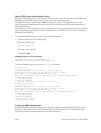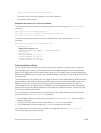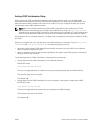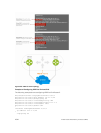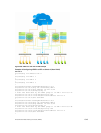
Setting VRRP Initialization Delay
When configured, VRRP is enabled immediately upon system reload or boot. You can delay VRRP
initialization to allow the IGP and EGP protocols to be enabled prior to selecting the VRRP Master. This
delay ensures that VRRP initializes with no errors or conflicts. You can configure the delay for up to 15
minutes, after which VRRP enables normally.
NOTE: When you reload a node that contains VRRP configuration and is enabled for VLT, Dell
Networking recommends that you configure the reload timer by using the
vrrp delay reload
command to ensure that VRRP is functional. Otherwise, when you reload a VLT node configured for
VRRP, the local destination address is not seen on the reloaded node causing suboptimal routing.
Set the delay timer on individual interfaces. The delay timer is supported on all physical interfaces, VLANs,
and LAGs.
When you configure both CLIs, the later timer rules VRRP enabling. For example, if you set vrrp delay
reload 600
and vrrp delay minimum 300, the following behavior occurs:
• When the system reloads, VRRP waits 600 seconds (10 minutes) to bring up VRRP on all interfaces
that are up and configured for VRRP.
• When an interface comes up and becomes operational, the system waits 300 seconds (5 minutes) to
bring up VRRP on that interface.
To set the delay time for VRRP initialization, use the following commands.
• Set the delay time for VRRP initialization on an individual interface.
INTERFACE mode
vrrp delay minimum seconds
This time is the gap between an interface coming up and being operational, and VRRP enabling.
The seconds range is from 0 to 900.
The default is 0.
• Set the delay time for VRRP initialization on all the interfaces in the system configured for VRRP.
INTERFACE mode
vrrp delay reload seconds
This time is the gap between system boot up completion and VRRP enabling.
The seconds range is from 0 to 900.
The default is 0.
1042
Virtual Router Redundancy Protocol (VRRP)





